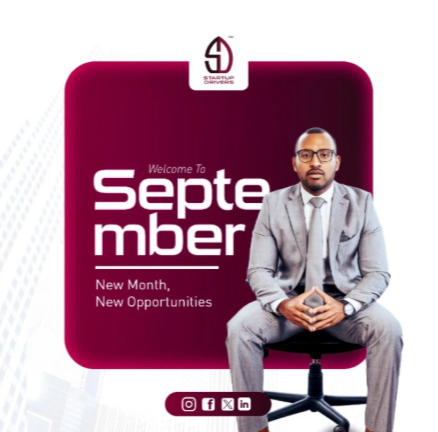Valuation represents one of the most consequential elements of startup fundraising. Higher valuations mean less dilution for founders and existing shareholders, preserving more ownership while securing necessary capital. Yet many founders approach fundraising without strategically positioning their companies to command the strongest possible valuations.
The months leading up to a fundraising round provide a critical window for enhancing your company’s perceived and actual value. Rather than accepting whatever valuation investors might offer based on your current position, proactive founders can implement specific strategies to strengthen their negotiating position and maximize their company’s valuation.
This article explores practical approaches for increasing your startup’s valuation before raising funds. These strategies focus on demonstrable improvements you can make to your business fundamentals, market position, and growth trajectory that justify higher valuations during investor negotiations.
Focus on Traction Metrics That Matter to Investors
Nothing drives valuation more effectively than demonstrable traction. Investors value evidence over promises, and specific forms of traction carry particularly strong weight in valuation discussions.
If your business model generates sales, prioritize revenue growth. For companies with existing revenue, consistent month-over-month growth creates the trend lines investors value most highly. Even if starting from a small base, demonstrating 15-20% monthly growth over several consecutive months suggests promising momentum. This growth trajectory allows investors to project continued expansion, significantly impacting how they value your company.
For pre-revenue companies, focus on user acquisition and engagement metrics. Growth in active users, increasing engagement rates, declining acquisition costs, and improving retention demonstrate market validation supporting higher valuations. Track and optimize these metrics rigorously, as they serve as proxies for future monetization potential without current revenue.
Secure high-profile customers or partners that validate your solution. Enterprise customers, recognizable brands, or strategic partners lend significant credibility to your business. These relationships signal market validation from sophisticated entities conducting their due diligence on your solution. Even pilot programs or paid trials with notable organizations can substantially impact perceived value.
Document your sales efficiency and customer acquisition economics carefully. Investors place premium valuations on companies that can acquire customers profitably and demonstrate improving efficiency over time. Track metrics like customer acquisition cost, lifetime value, payback period, and sales cycle length. Showing these metrics trending positively provides concrete evidence that your business model works and can scale efficiently.
Strengthen Your Competitive Position and Market Opportunity
Investors pay premium valuations for companies with defensible market positions addressing large opportunities. Strengthening these elements before fundraising can significantly impact your valuation.
Using multiple credible methodologies, articulate and document your total addressable market (TAM). Thorough market sizing supported by third-party research, bottom-up analysis, and clear segmentation demonstrates the scale of your opportunity. Be prepared to defend your market size claims with rigorous analysis rather than aspirational projections.
Develop and implement strategies that create sustainable competitive advantages. Investors value companies with defensible moats that protect against competition. These might include proprietary technology, network effects, unique data assets, exclusive partnerships, or regulatory advantages. Actively strengthen these defensive elements before fundraising and document their effectiveness.
Secure intellectual property protection where relevant to your business. Filing patents, trademarks, or other formal IP protections creates tangible assets contributing to company valuation. Even if patents haven’t been granted yet, patent-pending status demonstrates innovation and creates potential future protection that investors value in their assessments.
Build a World-Class Team and Advisory Network
Investors often say they invest in people as much as products or markets. The quality of your team and advisors significantly impacts valuation, particularly for early-stage companies.
Recruit strategic hires who bring specialized expertise, industry credibility, or proven execution ability. Even one or two key additions in critical roles can dramatically influence investor perception. Focus on roles most relevant to your current growth challenges—whether technical leadership, sales expertise, or operational experience scaling similar businesses.
Assemble an impressive advisory board with relevant industry expertise and connections. Strategic advisors with recognizable names or significant relevant experience lend credibility and demonstrate your ability to attract high-calibre talent to your vision. Formalize these relationships with proper advisory agreements rather than informal arrangements.
Document your team’s relevant accomplishments and execution history. Prepare detailed team bios that emphasize specific achievements relevant to your current venture—previous exits, scaling experience, domain expertise, or notable prior roles. This documentation helps investors recognize the exceptional capability concentrated in your team.
Address obvious team gaps before beginning fundraising. Investors quickly identify missing skill sets or experience in founding teams. While you can’t hire for every position before funding, addressing the most critical gaps demonstrates self-awareness and commitment to building a complete team. Consider part-time executives, consultants, or advisors if full-time hires aren’t feasible yet.
Optimize Your Financial Position and Runway
Your current financial position significantly impacts your negotiating leverage and investors’ perceptions of your company’s stability and discipline.
Extend your runway to reduce fundraising pressure and strengthen your negotiating position. The closer you are to running out of cash, the weaker your leverage in valuation discussions. Cut non-essential expenses, accelerate revenue where possible, or secure bridge funding from existing investors to ensure you can negotiate from a position of strength.
Develop detailed financial projections with clearly articulated assumptions and sensitivity analyses. Sophisticated financial modelling demonstrates business maturity and planning capability. More importantly, well-constructed projections help investors understand how additional capital will accelerate growth and increase company value, supporting higher current valuations.
Improve key financial metrics that influence valuation multiples in your industry. Different sectors have different valuation drivers. SaaS companies might focus on net revenue retention and gross margins, marketplaces on take rates and liquidity metrics, and consumer products on contribution margins and repeat purchase rates. Identify and optimize the metrics most relevant to your business model.
Create multiple potential funding scenarios with different growth trajectories. This preparation demonstrates strategic thinking about capital allocation and helps investors understand trade-offs between growth rates and capital efficiency. It also provides negotiation flexibility, allowing you to adjust your funding request based on valuation discussions.
Generate Strategic Interest and Negotiating Leverage
Creating competition for your round significantly impacts valuation outcomes. Strategic preparation can help generate this competitive dynamic.
Build relationships with multiple investors well before you need capital. Develop connections with diverse investor types (angels, venture firms, strategic investors) who might be interested in your sector. These pre-existing relationships lead to warmer, more receptive fundraising conversations than cold outreach during active fundraising.
Secure early commitment from credible investors to create momentum. Respected investors who verbally commit or formally commit through term sheets create positive signals that influence other investors’ perceived value. Sometimes, securing a smaller investment from a highly regarded investor at your target valuation can establish an anchor for the rest of your round.
Consider strategic investment interests alongside financial investors. Corporate strategic investors sometimes pay premium valuations based on strategic alignment rather than purely financial considerations. Cultivating relationships with companies that might benefit from strategic alignment with your startup can create additional options during fundraising.
Document genuine acquisition interests or partnership discussions if they exist. While you shouldn’t fabricate interest, legitimate inbound acquisition inquiries or strategic partnership discussions can influence perceived value. This documentation provides third-party validation of your company’s market position and potential.
Time your fundraising to align with positive industry trends or news. Market timing significantly impacts valuations. If your industry sees increased investment activity, recent exits, or growing public interest, consider accelerating your fundraising to benefit from the positive sentiment. Conversely, if your sector faces headwinds, you might focus longer on building value before raising capital.
Polish Your Narrative and Presentation
How you communicate your opportunity significantly impacts perceived value. Refining your narrative and presentation before fundraising can substantially influence valuation discussions.
Craft a compelling vision that balances ambitious scale with credible execution paths. Investors pay premium valuations for massive opportunities only when founders can articulate realistic pathways to capturing them. Develop narratives that demonstrate both the magnitude of your vision and your pragmatic approach to achieving it.
Articulate clear use of funds and expected outcomes from the investment. Investors value companies that can explain precisely how additional capital will accelerate growth and increase company value. Connecting specific funding amounts to concrete milestone achievements helps justify your valuation by illustrating the return path for new investors.
Practice your pitch delivery extensively, particularly the financial and valuation components. Strong businesses can secure lower valuations due to ineffective communication during investor meetings. Rehearse your core pitch and your responses to challenging questions about valuation, metrics, and growth assumptions.
Conclusion
Remember that sustainable valuations come from building genuine business value rather than financial engineering or negotiation tactics alone. The strategies outlined in this article focus on substantive improvements to your business fundamentals and market position that create lasting value while strengthening your immediate negotiating position.
The months before fundraising provide a critical window for implementing these valuation-enhancing strategies. Approach this period with intentionality, focusing your efforts on the specific improvements that will most significantly impact investors’ valuation of your business. With the right preparation and execution, you can secure the capital you need while preserving more ownership and setting your company on a stronger trajectory for long-term success.



